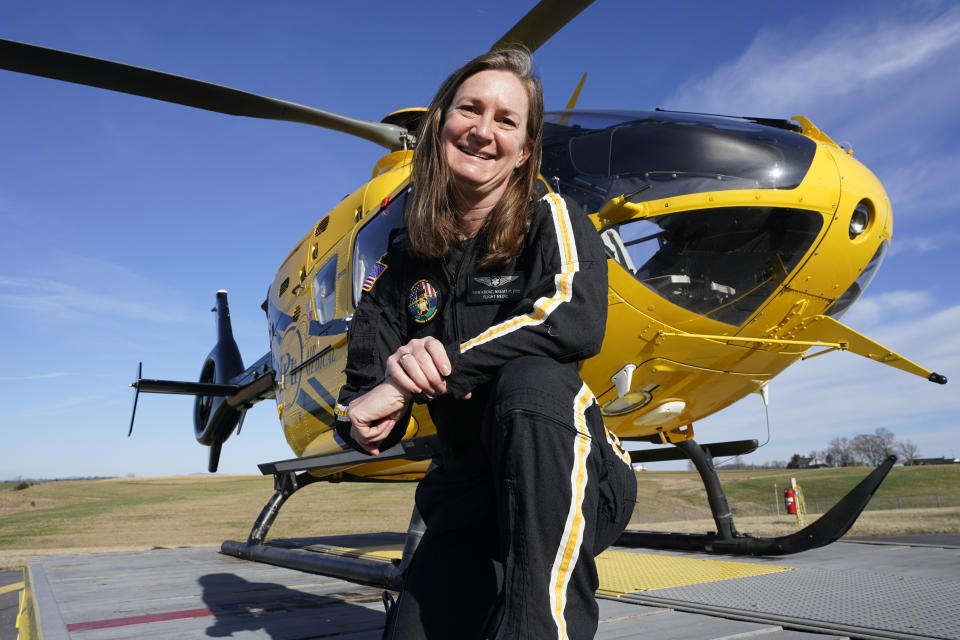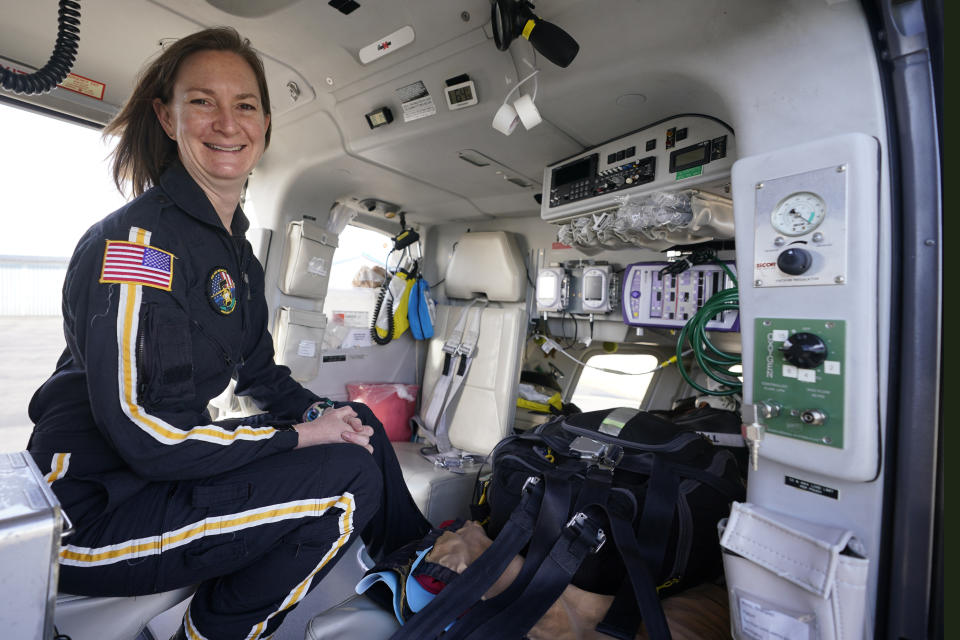One Good Thing: Flight paramedic treats patient medical debt
When flight paramedic Rita Krenz boards a helicopter, she knows her patients are about to face problems she can’t fix — a health care system that buries people in debt after a car accident or stroke.
So she decided to do something about it. She turned for help to RIP Medical Debt, a nonprofit that buys and forgives medical debt.
Krenz started a fundraising campaign that brought in more than $18,000 for the charity. That money has helped RIP Medical Debt forgive the debt of more than 900 people so far, with the average bill abolished totaling around $1,340.
Krenz has no way of knowing if she will help anyone she’s treated. But it’s enough to know that her campaign will help somebody.
“A lot of my friends in health care are worn down by this broken system,” the Charlottesville, Virginia, resident said. “This, it helps give some relief to that weariness.”
Krenz flies several times a week during her 24-hour shifts, responding to emergencies like car accidents or transporting patients from hospital to hospital. The 47-year-old said she started her career focused idealistically on the help she could provide.
“Years in the system now fill me with doubt,” Krenz wrote on her fundraiser’s webpage, noting that she wonders how life-saving care can lead to financial ruin. “How can this be our system, in this amazing country?”
Rising care costs and shrinking insurance or a lack of coverage can swamp patients with debt, especially if they need a helicopter, which can result in bills topping $20,000 in some cases. More than one in seven U.S. residents with a credit record has overdue medical debt on it, according to the Urban Institute, a nonpartisan think tank.
It’s one of the most common forms of debt in collections.
RIP Medical Debt relies on individual donations, corporate sponsors and fundraising campaigns to attack this problem. Krenz started her campaign last September after first hearing about the nonprofit.
She asked friends, family and co-workers for help. RIP Medical Debt promoted her campaign as well, but donations stalled at around $10,000.
Then they picked up again toward the year’s end. A church Krenz has no connection to gave $1,000. A couple she doesn’t know contributed $2,500.
That run, Krenz said, was so “uplifting and reaffirming that there are good people in the world.”
She also threw in money from her pandemic relief stimulus checks, and the campaign climbed past its goal of $15,000.
RIP Medical Debt buys blocks of older debt it can get cheaply and aims to help people with low incomes. It can buy debt in a particular area or market, but it cannot target specific people.
The nonprofit estimates that it has erased more than $3 billion in medical debt since two former debt collections executives started it in 2014. Much work remains.
About $140 billion in medical debt was in collections last year, according to Stanford economist Neale Mahoney.
Erasing debt can make it easier for patients to buy a car or get a job. It also can encourage them to keep up with their care since they don’t have to worry about medical bills they still owe.
Once RIP Medical Debt buys and forgives debt, it sends patients a yellow letter telling them things are resolved. For Krenz, that made what she was doing feel more real than simply writing a check to a charity.
“I can picture a person going to the mailbox and getting that letter,” she said.
___
“One Good Thing” is a series that highlights individuals whose actions provide glimmers of joy in hard times — stories of people who find a way to make a difference, no matter how small. Read the collection of stories at https://apnews.com/hub/one-good-thing



